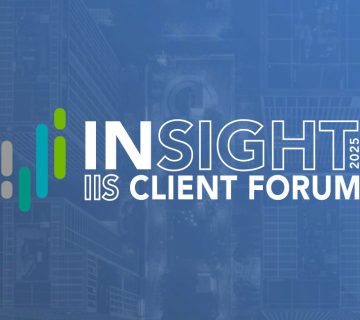Total Cost Reporting is Here. Are Wealth Firms Ready?
July 10, 2025
By Adam Beach, VP Client Experience, Infinite Investment Systems
The Canadian wealth management industry is entering a new era of transparency, and with it, a new layer of complexity. As of 2026, firms will be required to comply with Total Cost Reporting (TCR) obligations introduced by the Canadian Securities Administrators (CSA) and the Canadian Council of Insurance Regulators (CCIR).
These changes aren’t just a compliance checkbox. They mark a fundamental shift in how we communicate value to clients and how firms must manage operational and data infrastructure to stay aligned. As a former Chief Compliance Officer, I’ve seen firsthand how regulatory change can disrupt operations, client conversations, and advisor workflows. TCR is no exception, but with the right approach, it’s also an opportunity.
What Is Total Cost Reporting?
At its core, TCR is designed to give retail investors a clearer picture of the total costs associated with owning investment products. For the first time, annual client statements must include the combined impact of embedded fees, such as management expense ratios (MERs) and trading costs, alongside the charges already disclosed under CRM2, like advisor compensation and direct fees.
This affects all investment funds (mutual funds, ETFs, seg funds) and brings a sharper focus to cost transparency across both securities and insurance sectors.
The Key Impacts for Wealth Firms
- Expanded Data Requirements
Most firms have robust reporting for direct fees and compensation, but TCR demands much more. Accurate fund-level cost data, embedded fees, and product-level total cost estimates are now required. This means accessing, validating, and aggregating data from multiple sources, many of which firms may not have historically integrated into their client reporting systems. - Pressure on Reporting Infrastructure
Legacy systems, particularly those built around CRM2, are not always equipped for this next phase. Firms will need to invest in their data pipelines, performance calculation engines, and reporting outputs. Integrating these seamlessly and at scale is no small task, especially with client-facing deadlines approaching. - Elevated Advisor Conversations
With clients seeing total fees on paper, advisors will need to be prepared for tough questions about value and performance. Firms must equip their frontlines with the tools, training, and context to explain the full picture. This helps reinforce the value of advice beyond cost alone. - Regulatory Scrutiny and Client Trust
These new disclosures will become a benchmark. Firms that underreport or fail to meet accuracy expectations risk not just regulatory consequences but also erosion of client trust. The accuracy and clarity of cost disclosures will be as important as the numbers themselves.
How Firms Can Manage the Change
- Start With a Data Audit
Map out where your cost data lives today and identify the gaps. Are you relying on external providers for MERs and trading costs? Do you have a plan to ingest and normalize that data? Partnering with third-party data vendors or portfolio management systems that specialize in fund-level analytics can fill critical holes. - Modernize Your Reporting Tech Stack
Firms should assess whether their current systems can support TCR-compliant output, and whether they can do so efficiently at scale. Look for solutions that offer IBOR (Investment Book of Record) capabilities to provide a single source of truth that consolidates portfolio holdings, transactions, and cost metadata. - Engage Advisors Early
Bring advisors into the loop now. Provide playbooks and hypothetical TCR reports to guide client conversations. The better equipped they are, the smoother the transition will be for both advisors and their clients. - Test, Test, Test
Don’t wait until the last minute. Firms should begin testing statement generation and reconciliation workflows as early as possible. Validation of cost calculations and reconciliation against fund data is key to ensuring compliance and accuracy.
A Strategic Opportunity
While TCR presents immediate compliance and operational hurdles, it also opens a door. Transparency builds trust, and firms that can clearly articulate value relative to cost will have an edge.
In fact, I’d argue that this shift could strengthen client relationships in the long run. Clients who understand exactly what they’re paying, and why, are more likely to appreciate the true value of professional advice, sophisticated planning, and long-term strategy.
For Canadian wealth firms, the next 18 months will require investment, collaboration, and a clear roadmap. But if managed well, TCR will not just be another checkbox. It will be a chance to lead with clarity and client-centricity in a new era of investing.







